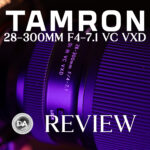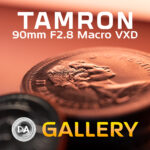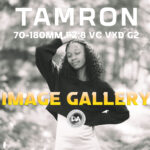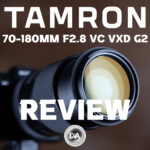
Tamron has long been a company invested in designing all-in-one/superzoom lenses. My very first Tamron lens was their 18-270mm PZD lens, which I owned and used for a few years starting in 2010. That was an APS-C lens, but Tamron later branched into full frame all-in-one lenses like the 28-300mm PZD lens that I reviewed in 2014. These types of lenses tend to be commercially successful because there is a good percentage of people who want the improved image quality of a “professional” camera but don’t want to be constantly changing lenses or carrying multiple lenses. The idea of one lens that does everything is very appealing to them, a sort of “kit lens on steroids” with a much more robust zoom range on the telephoto end. The secondary market for a lens like this are those who want a single lens solution for travel. I own the Tamron 28-200mm RXD lens for that latter reason, and I’ve both given it a positive review (in 2020) and more recently explored if it could handle the 61MP resolution of the Sony a7RV while traveling here. I really like the 28-200mm, but there will always be those who want more reach, and that’s why the Tamron 28-300mm F4-7.1 Di III VC VXD now exists. Is a bigger zoom better? Find out in my video review shared below, read my text review, or just enjoy the photos below.
Follow Me @ YouTube | Patreon | Instagram | Facebook | DA Merchandise | Flickr | 500px | X
Thanks to Tamron USA for sending me a review loaner of this lens. As always, this is a completely independent review. *The tests and most of the photos that I share as a part of my review cycle have been done with the Sony a7RV along with the Sony Alpha 1 that serve as my benchmark cameras for Sony lenses.
__________________________________________________________________________________________________
Here’s a look at the overall selling features of the new 28-300mm VXD, or what Tamron codes the A074:
- Full-Frame | f/4-7.1 to f/22-40
- VXD Linear Motor Focus Mechanism
- VC Camera Shake Reduction System
- Focus Set Button, Zoom Lock Switch
- Minimum Focusing Distance: 7.5″
- 20 Elements in 13 Groups
- 9-Bladed Diaphragm
- Moisture-Sealed Design, Fluorine Coating
- Tamron Lens Utility Connector Port
But probably the biggest feature here is the incredible zoom range that is a full 10.7x, going from this framing at 28mm:

…all the way to this framing at 300mm:

That’s obviously going to be both incredibly useful and incredibly appealing, particularly if the image quality doesn’t suffer too much. All superzoom lenses are a serious of compromises, as the engineers have to try to solve the problems of wide angle focal lengths while also having to cope with the inherent problems of telephoto focal lengths. Part of what has made the Tamron 28-200mm so popular is how good the image quality is despite having a fairly big zoom ratio.
One of the main limitations of the new 28-300mm VXD relative to the popular 28-200mm RXD lens is the fact that this lens is very SLOW when it comes to its aperture. It is a variable aperture lens that runs from F4 on the wide end to F7.1 on the telephoto end, but it’s worse than that. It actually closes down very quickly. Here’s a look at the aperture values relative to the focal lengths:
- F4 (28-31mm)
- F4.5 (32-43mm)
- F5 (44-53mm)
- F5.6 (54-77mm)
- F6.3 (78-169mm)
- F7.1 (170-300mm)
Ouch! That means of the 272mm of zoom range represented here, 223mm of it is at F6.3 or slower, and only 49mm are at F5.6 or faster. By contrast, here is the breakdown on the 28-200mm:
- F2.8 (28-49mm)
- F3.5 (50-99mm)
- F4.5 (100-149mm)
- F5.6 (150-200mm)
The 28-200mm is a radically brighter lens by comparison all throughout the zoom range, and frankly this was this issue with the 28-300mm VXD that I found most frustrating during my review period. This is a lens that vastly prefers being used in good light, but if you can get that good light, you can also get good images.

So is that incredible zoom range worth the tradeoffs to light gathering? You can find my thoughts on that in the reviews!
Photos of the Tamron 28-300mm VXD
Photos taken with the Tamron 28-300mm VXD
_________________________________________________________________________
GEAR USED:
Purchase the Tamron 28-300mm VXD @ B&H Photo | Adorama | Amazon | Camera Canada | Amazon Canada | Amazon UK | Amazon Germany
___________________________________________________________________
Purchase the Sony a7RV @ B&H Photo | Adorama | Amazon | Camera Canada | Sony Canada | Amazon Canada | Amazon UK | Amazon Germany
__________________________________________________________________
Purchase the Sony a7IV @ B&H Photo | Adorama | Amazon | Camera Canada | Sony Canada | Amazon Canada | Amazon UK | Amazon Germany
_________________________________________________________________
Purchase the Sony Alpha 1 @ Camera Canada | B&H Photo | Adorama | Amazon | Sony Canada | Amazon Canada | Amazon UK | Amazon Germany | Ebay
_________________________________________________________________
Want to support this channel? Use these affiliate links to shop at: B&H Photo | Amazon | Adorama | Camera Canada | Amazon Canada | Amazon UK | Ebay | Make a donation via Paypal
Buy DA Merchandise https://bit.ly/TWIMerch

Keywords: #withmytamron, Tamron, 28-300mm, Tamron 28-300mm Review, Tamron 28-300 Sony, Di III, VC, VXD, Travel, Tamron 28-200mm, Full Frame, All-in-One, F4-7.1, Review, Sony Alpha 1, Sony a7RV, Review, Hands On, Dustin Abbott, Real World, Comparison, Sharpness, Bokeh, Flare Resistance, Autofocus, Image Quality, Sample Images, Video, Photography, let the light in, weathersealing, #letthelightin, DA










